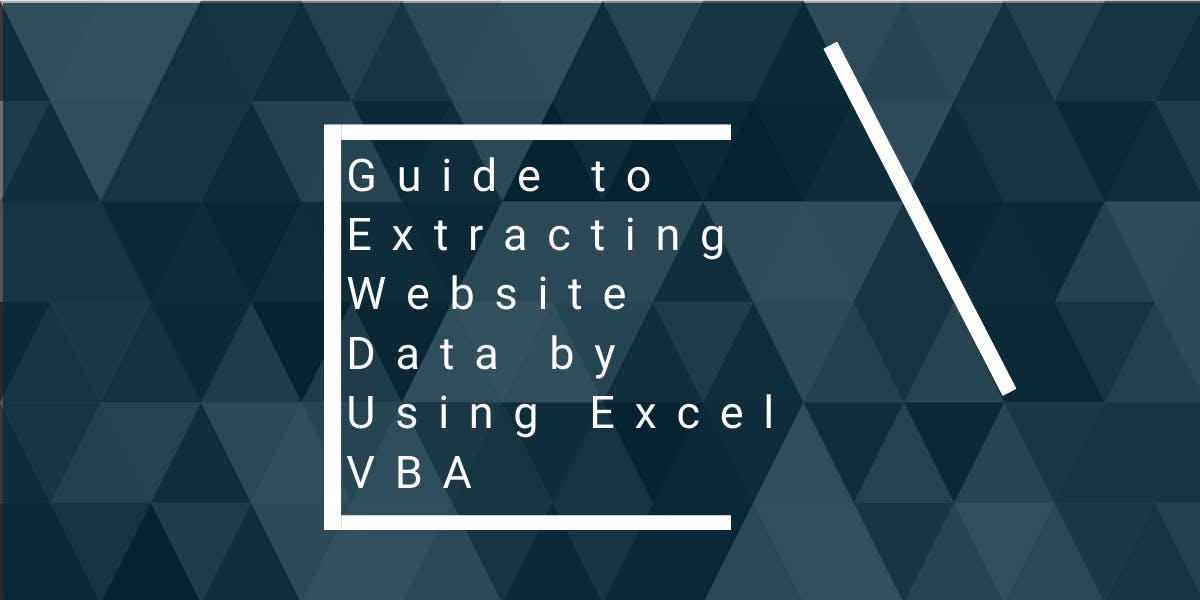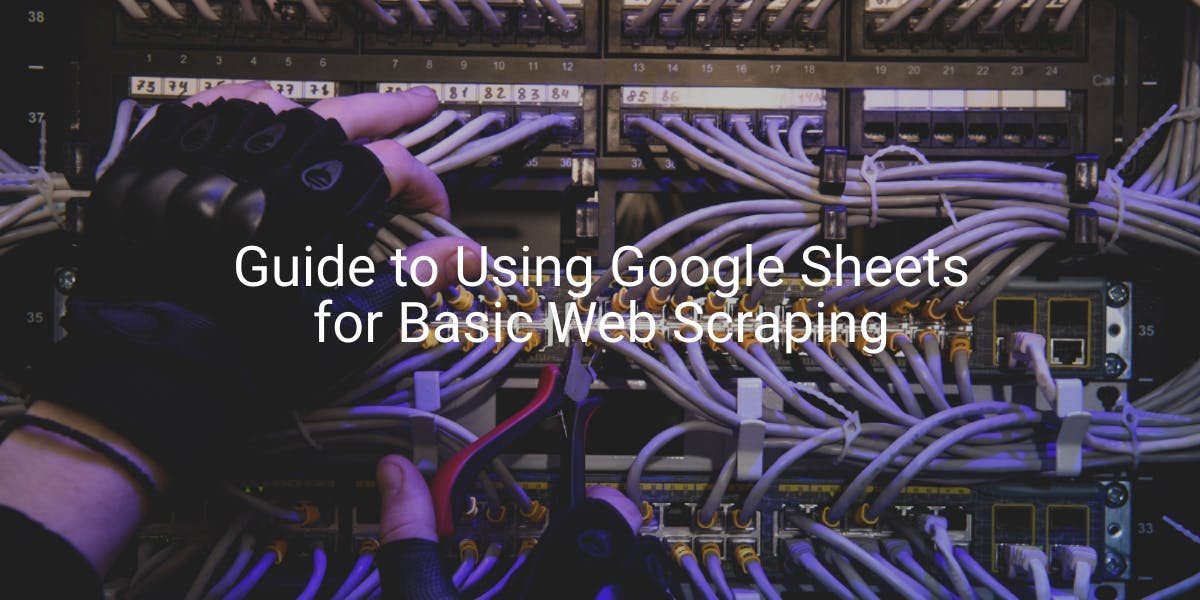How to Estimate and Reduce Data Collection Costs
Flipnode on May 02 2023

Businesses not only strive to collect and analyze public data but also aim to do so in a cost-effective manner. However, achieving this goal can be challenging.
This article will explore the essential factors that impact data acquisition costs, the pros and cons of in-house scraping solutions, and effective strategies to decrease data acquisition expenses.
Factors that influence the cost of data collection
Regarding the expenses of data acquisition, some variables influence them. Let's explore each of these factors in more detail.
Complexity of a target
Bot-detection mechanisms are often implemented by targets to prevent their content from being scraped. The precautions taken by the targeted sources will dictate the necessary technologies for accessing and retrieving public data.
Dynamic targets
JavaScript is a popular programming language used by the majority of websites to render their content. While it adds interactivity and dynamism to web pages, it poses a challenge for web scrapers.
During regular web scraping, which does not involve executing JavaScript, a scraper sends an HTTP request to a server and receives HTML content in response. However, in some cases, the initial response may not contain any useful data as the website may rely on loading additional data through JavaScript execution on the browser that received the initial response.
One common approach to extracting data loaded via JavaScript is to use a headless browser. However, this method requires extra computing resources and maintenance, leading to a need for more servers, especially for large-scale data gathering. Additionally, sufficient human resources are necessary to maintain the entire infrastructure.
Server restrictions
Header checks, CAPTCHA, and IP bans are the primary types of server restrictions that are commonly encountered.
Header check
HTTP headers serve as an initial checkpoint for websites to distinguish between a scraper and a genuine user attempting to access their site. These headers enable seamless transmission of request details between the internet browser and the website server.
There exist several types of HTTP headers that carry information about both the client and server involved in the request, such as language preference (HTTP header Accept-Language), compression algorithm (HTTP header Accept-Encoding), browser, and operating system (HTTP header User-Agent), among others.
Although a single HTTP header may not be unique, the combination of all headers and their values can be distinctive to a particular browser running on a specific machine. This combined information, along with cookies, is referred to as the client's fingerprint.
If a website identifies the header set as suspicious or incomplete, it may either display false data or entirely ban the requester. Therefore, it's essential to optimize the header and cookie fingerprint details in a request to minimize the possibility of being blocked while scraping.
CAPTCHA
CAPTCHA is a popular method used by websites to prevent malicious bots from abusing their services. However, this is also a challenge for benign scraping bots, which aim to collect public data for business or research purposes. If you fail the header check, the targeted servers may respond with CAPTCHA.
CAPTCHAs can take various forms, but nowadays, they mostly rely on image recognition. This makes it difficult for scrapers as they are not as adept at visual information processing as humans. Another popular type is reCAPTCHA, which involves clicking a single checkbox to prove that you're not a bot. However, this simple task is not as easy as it seems as the test also considers the path leading to the checkbox, including mouse movements.
The most recent reCAPTCHA type doesn't require any interaction. Instead, it analyzes the user's web page interaction history and overall behavior to differentiate between a human and a bot.
To avoid triggering CAPTCHA, it's best to send the correct header information, randomize the user agent, and set intervals between requests.
IP blocks
Web servers resort to using IP blocks as the most extreme measure to prevent suspicious agents from scraping their content. If you don't pass the CAPTCHA test, chances are that you will face an IP block shortly after.
It's worth noting that investing effort in avoiding an IP block in the first place is a better approach than dealing with its consequences once it happens. To prevent your IP from being banned, you need two things: an extensive pool of proxies and a legitimate fingerprint. Both of these requirements demand significant resources and maintenance, ultimately increasing the cost of collecting public data.
Technologies and tools
As mentioned earlier, custom-tailored technologies are necessary for successful web scraping and for avoiding unnecessary complications.
If you plan to build an in-house scraper, you need to consider the entire infrastructure and allocate resources for maintaining the relevant hardware and software. The system may comprise several elements, such as:
- Proxy servers: Proxies are essential helpers during web scraping. Depending on the target's complexity, you may require Datacenter or Residential Proxies to access and retrieve the desired content. A well-developed proxy infrastructure comprises ethical sources, multiple unique IP addresses, country and city-level targeting, proxy rotation, unlimited concurrent sessions, and other features.
- Application Programming Interfaces (APIs): APIs act as intermediaries between different software components, enabling two-way communication between them. APIs are crucial components of the digital ecosystem as they assist developers in saving time and resources. They are widely used in various IT fields, including web scraping, where Scraper APIs are tools created for large-scale data scraping operations.
In-house data collection: What you need to know
Before deciding whether to develop an in-house scraper or outsource it to a third party, it is crucial to consider the requirements your web scraper must meet. The scope of your data needs, the frequency and speed of data retrieval, and the complexity of your targets will determine these requirements.
Advantages
Having an in-house scraper provides the advantage of being highly customizable, allowing you to tailor it to the specific needs of your project. With an in-house scraper, you have complete control over its development and maintenance.
If your business heavily relies on web scraping and data gathering, and you possess the necessary expertise and resources to invest in an in-house scraper, then it might be the ideal choice for you.
Disadvantages
While in-house web data scraping can be an effective and affordable solution for some data acquisition needs, it also has its limitations. As your data requirements expand, you will need to invest in a scraper infrastructure that can be easily scaled up, which requires a significant resource commitment. If data extraction and web scraping are not a core focus of your business, it may be more practical to consider outsourcing scraping solutions.
How to estimate the cost of data collection?
The costs associated with data collection depend on the specific requirements of your project and the technologies needed to collect data from your targets. It's important to gather all the necessary information about your data sources, as some may require a monthly fee to access their APIs for up-to-date data.
Before starting your project, it's crucial to determine if you have free access to the data on the servers or need to establish a data agreement with the data sources. Once you have this information, you can begin estimating your project's data collection cost. The preliminary formula for this estimation is:
Number of data sources * Average monthly data access costs
However, it's important to note that this formula only calculates the costs associated with data sources. You must also consider the expenses related to your workflow's nature. For instance, if you plan to gather public data using in-house solutions, you need to factor in the costs of proxy infrastructure, APIs, computing resources, and other related expenses. In some cases, opting for a Scraper API can be more cost-effective.
How Scraper APIs can lower data acquisition costs
If you've decided to go with outsourcing after carefully considering the pros and cons of in-house and outsourced scrapers, Scraper APIs could be an excellent option for your data harvesting needs.
Here are some of the key features that make Scraper APIs stand out when it comes to extracting public web data:
- Ability to handle even the most complex targets using built-in JavaScript rendering functionality.
- Resilience to bot detection responses such as CAPTCHAs and IP blocks.
- Integrated proxy infrastructure and customizable results delivery to your preferred cloud storage.
- Embedded auto-retry functionality ensures successful result delivery.
- Structured data in JSON format reduces data cleaning and normalization costs, simplifying data management and analysis.
With its rich set of features aimed at seamless data extraction, Scraper APIs are a valuable asset for large-scale data gathering from even the most challenging targets.
Wrapping up
The main technological challenges that scrapers face also happen to be the factors that influence data collection costs. To ensure cost-effectiveness in the scraping process, it's crucial to utilize tools that can effectively handle the targets and overcome anti-scraping measures. Scraper APIs are an excellent solution for public data gathering, as they can efficiently address these challenges.



